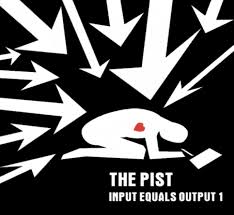There are many different angles to be explored when looking at student outcomes. We need to know the learners background of content, the students motivation and the learners developmental level. When we are talking about higher education this can encompass a wide variety of learners and needs. “A central challenge for educators is to support the emergence of environments for adults to participate in their own learning with respect to to those issues that are integral to their lives (Barab, Thomas & Merrill, 2001, pg. 107).”
So not only should we be looking at outcome, but also where students are in their lives. Distance education was an alternative for students who were unable to attend traditional classes based on geography, but the ability to remove the constraints of time and location from education exploded with the technology offered by the internet and has opened a whole new educational community (Bernare, Abrami, Lou, Borokohovski, Wade,Wozney et al., 2004).
What are the effects on K-12 students in distance education courses? Eleven variables were identified as features that impacted outcomes of student performance. These variables were: duration of program, frequency of use of distance learning, instructional role of the program, number of distance learning sessions, duration of distance learning sessions, pacing of the instruction, role of the instructor, timing of interactions, type of interactions, amount of teacher preparation for distance instruction, and amount of teacher experience in distance instruction (Cavanaugh, Gillan, Kromrey, Hess & Blomeyer, 2004).
These ideas connect to interactions of student:teacher:content. I am thinking about science courses that I took as an undergraduate and how they may work online. The lecture part of the course would be fantastic online, but what about the labs? How about the role of gaming as an alternative to textbooks and science labs? Massive Multiplayer Online Gaming (MMGO) can offer “well-crafted instruction, yet they also fully realize simulated worlds exhibiting emergent, unpredictable properties…MMGO’s can offer multivariate problems of real complexity and of genuine social importance to those solving them, problem solvers are stakeholders…individuals have the opportunity to make a genuine contribution (Steinkuehler & Chmiel, 2006, pg. 728).” Maybe this is an area of education that will get more attention and we will begin to realize that while distance education and f2f education have the same outcomes, some of the technological tools we have will benefit some disciplines over others.
References
Barab, S. A., Thomas, M. K., & Merrill, H. (2001). Online learning: From information dissemination to fostering collaboration. Journal of Interactive Learning Research, 12(1), 105-143.
Bernard, R. M., Abrami, P. C., Lou, Y., Borokhovski, E., Wade, A., Wozney, L., … & Huang, B. (2004). How does distance education compare with classroom instruction? A meta-analysis of the empirical literature. Review of educational research, 74(3), 379-439.
Cavanaugh, C., Gillan, K. J., Kromrey, J., Hess, M., & Blomeyer, R. (2004). The Effects of Distance Education on K-12 Student Outcomes: A Meta-Analysis.Learning Point Associates/North Central Regional Educational Laboratory (NCREL).
Steinkuehler, C., & Chmiel, M. (2006, June). Fostering scientific habits of mind in the context of online play. In Proceedings of the 7th international conference on Learning sciences (pp. 723-729). International Society of the Learning Sciences.

